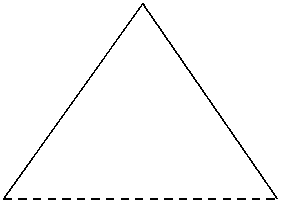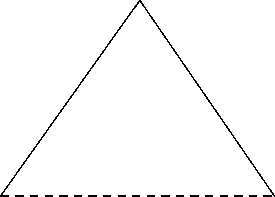THE CONTEXTUAL MEANINGS OF PROVERBS IN THE “@BOOKOPROVERB”
on
1
THE CONTEXTUAL MEANINGS OF PROVERBS IN THE “@BOOKOPROVERB”
By:
NI WAYAN RATIH PUNTI MAHAYANTI GETAS
ENGLISH DEPARTMENT
FACULTY OF LETTERS AND CULTURE, UDAYANA UNIVERSITY
Abstrak
Skripsi yang diberi judul The Meanings of Proverbs in “@BookOProverb”bertujuan untuk menjawab dua pertanyaan yang menjadi pokok bahasan: Apa tipe proverb yang ditemukan dalam akun twitter @BookOProverb dan bagaimana pembentukan makna kontekstualnya sehingga dapat dipahami oleh pembaca akun twitter tersebut. Proverbs adalah sebuah ekspresi atau ungkapan yang unik karena setiap kata yang digunakan memiliki fungsi khusus untuk menjelaskan maknanya yang sebenarnya jauh mendalam daripada kata-kata yang digunakan. Karena alasan inilah penulis merasa tertarik untuk memilih salah satu aspek kajian semantik yakni contextual meaning menjadi topik dari penelitian ini. Data yang digunakan diambil dari sebuah sosial media yaitu Twitter. Dari sebuah akun twitter yaitu @BookOProverb, data dibaca dengan teliti, dikategorikan sedemikian rupa sesuai dengan tipenya yang sesuai menggunakan teori tipe proverb oleh Lowth (1753) lalu kemudian ditemukan artinya dengan menggunakan teori makna oleh Ogden and Richard (1972).
Berdasarkan hasil dari penelitian ini ditemukan bahwa ada tiga tipe proverb dan kemudian makna dari masing-masing proverb tersebut memiliki makna kontekstual.
Keywords: proverb, tipe proverb, makna.
Proverbs are used as one of the way to convey the message from any culture. The proverb, as a short popular saying in form, expresses a truth of experience or an observation in a strikingly figurative language. Meaning conveyed by the proverbs may be in literal way or not. Proverbs usually appear so simple and obvious when
heard, read or used, yet they amount to very effective modes of communication in interpersonal relationships.
Social media is a type of online media that expedites conversation as opposed to traditional media, which delivers content but doesn't allow readers/viewers/listeners to participate in the creation or development of the content. Because it involves the people to interact, social media these days provides much information and it does really matter to influence people. That becomes the reason why twitter was chosen to be analyzed.
-
1. What types of proverbs were applied in the twitter account @BookOProverb?
-
2. How was the meaning of proverb in the twitter account @BookOProverb assessed by the readers?
-
1. To describe the types of proverb found in the twitter account @BookOProverb.
-
2. To analyze the meaning of the proverbs.
Research is one of the effects involved to find and examine the truth of something. Methodology is a procedure required to do the research well. Therefore, research method is the systematic steps used to produce a scientific study. Research method is very important for the validity of the research. In this study, methodology include the data source, method and technique of collecting data, and method and technique of analyzing data. The following are the detailed explanation of them:
“@BookOProverb” is one of an account in a famous social media these days, twitter. With the username “@BookOProverb”, it appears as a favorite account which is believed as the best account that posts proverb everyday. This account is followed by 241.119 people. Until September 19th, 2013 this account has posted 14.310 tweets. The proverbs posted by this account were taken from Bible Quotes from the Book of Proverb.
This research used library research method. Library research was done through reading the tweet posted by the twitter account @BookOProverb carefully. In library research, there are no respondents or informants involved. Library research is related to the techniques of collecting data using documentation and note-taking techniques.
The data were collected using purposive sampling which means that the data were taken from this twitter account were chosen intentionally because of the certain feature of the sample itself. The purposive sampling was done by selecting five proverbs that represents each type of proverb.
The data were collected through some techniques as follows :
-
1. First step was finding a twitter account assumed or considered to post proverbs.
-
2. The second step was reading the tweet carefully and intensively. It was followed by selecting five proverbs that can be the best representation for each type of proverb.
-
3. Then tweet is read carefully in order to get better understanding of it.
After the data from the twitter account “@BookOProverb were collected, the next step was continued by method and techniques of analyzing data. The analysis of the data was observed from the scope of discussion and then the collected data were analyzed using Qualitative method. Qualitative method is the method to find out the answer and it is analyzed descriptively and clearly based on the relevant theory. Each collected data was analyzed through some steps, they are:
-
1. Classifying the data which provide the information and list of proverbs.
-
2. Categorizing the proverbs into their proper types based on the theory proposed by R. Lowth (1753).
-
3. Next, explaining the process of expressing meaning of each proverb using theory of Odgen and Richard with their basic triangle. (1972)
The first analysis used Lowth’s theory who divides the proverb into three types. Lowth, in his Oxford Lectures on Hebrew poetry (1753) was the first to note the phenomenon of parallelism between adjacent poetical lines, and, further, to distinguish between the three types of parallelism: Synonymous, Antithetic, and Synthetic.
Ogden and Richard (1972) found out the meaning of proverbs through the basic triangle which helped the reader look at the relationship for each component. The basic triangle consisted of three components: symbol, thought or reference, and referent. According to Ogden and Richard, one peak of the triangle would be the symbol (a word). A good example of a symbol is a text. Text, by itself, is meaningless, as it drew no relation to anything outside itself. However, when the text is combined with a word or sentence, the people could create a workable definition
from which to operate. Another peak would be a thought, such as words to describe the symbol. Finally, the image created in our minds would become the referent.
Below is a sample of analysis of one the types of proverb with its meaning that is found in the twitter account @BookOProverb.
There is a significant characteristic that describes this type well. According to Lowth, Contrastive Parallelism is one kind of proverb where the first line makes a statement of truth, then the second line gives a corollary-the same truth stated in opposite terms.
-
5.1.1. Data 1
Honesty can keep you safe
But if you can’t be trusted, you trap yourself
(Proverb 11:6)
-
a. Analysis of the Type of Proverb
There are two lines of phrases that build up this proverb. It can be seen that the first line is an expression of a true statement that give us an information about something. While in the second line, it is given a statement that is in contrast with the first one. The first and the second line both deliver a statement of a truth but it is stated contrarily.
This proverb is categorized Contrastive Parallelism because in the second line the opposite condition of “honesty” is found as stated in the first one which is expressed as “can’t be trusted”. Besides, the conjunction “but” in the second line is the sign that the first line is in contrary with the second one.
-
b. Analysis of Meaning
When people hear this proverb, what come first to their mind is this proverb is one of proverbs which talks about one essence of living namely honesty. Both lines indicate the righteousness. But in order to make a clear picture of this proverb, it needs to be resolved using the basic triangle by Ogden and Richard, as follows:
Thought/reference

Symbol
Referent
(Honesty can keep you safe)
This proverb was analyzed by dividing it based on its line. The first line of this proverb is “Honesty can keep you safe” which acts as symbol. The thought or reference refers to the condition that can be caused by doing something. According to Oxford Advanced Learner’s Dictionary (2005: 748), “honesty” is the quality of being honest. The quality provides the ability to state a fact or an opinion which though may seem disappointing, but true. Being honest is such an important thing in life, whether in family, at school, or in the working environment. Therefore, it will be a good point of somebody. The word “safe” means a condition where somebody or something is protected from any danger or harm. (Hornby, 2005: 1339). When somebody or something is safe, they are not involving much or any risk. They are not likely to be wrong or upset somebody else. The referent here is the image which refers to the situation where being honest is important to do.
From the explanation above, the idea of the first line of this proverb is about the importance of saying the truth because it will bring a lot of goodness.
Symbol
Thought/reference

Referent
(If you can’t be trusted, you trap yourself)
The second line of this proverb is “If you can’t be trusted, you trap yourself”. It is the symbol that gives the thought or reference as a condition as the result of something. Being trusted by others needs time and proof. Truth is something which is the belief that somebody or something is good, sincere, and honest. It will not try to harm or trick those who has give the truth itself. But if somebody or something cannot do that such of things, the bad thing is it will be complicated. The word “trap” here delivers the idea that the situation which forces somebody or something into a place or situation that they can not escape from (Hornby, 2005: 1633). This situation is really bad because it is commonly related to dangers. The referent which is created in our mind is the condition which will happen if somebody is not telling the truth.
As explained above, the idea of the second line of this proverb is the consequence which cannot be avoided if there is situation where somebody or something cannot be believed in. The consequences will bring the difficulties in somebody’s life.
If the idea of the first and second line is related, the idea that will be
brought to the readers is it is nice for being a honest person. Honesty is the most valuable thing in order to get many friends or to do activity in our daily life. Once somebody is not trustworthy, then it causes bad situation and bring troubles.
From the discussion and analysis in the previous chapter, the following are some important things that can summed:
-
1. In the twitter account “@BookOProverb” many kinds of proverbs were found. But there are only five proverbs that represent every type of proverb. Those types of proverb could be presented as follows: Repetitious Parallelism or Synonymous, Contrastive Parallelism or Antithetic, and the last one is Completive Parallelism or Synthetic.
-
2. Concerning to the meaning, meaning of the proverbs in this twitter account cannot be easily understood by the meaning of the words that built it up. It needs a deep analysis of meaning from its components using the basic triangle of Ogden and Richard. By using the basic triangle, it is obtained a clear and deep analysis of the meaning of each proverb was found.
Hornby, A. S. 2007. Oxford Advance Learner’s Dictionary 7th Edition. Great Britain: Oxford University Press.
Ogden, C.K. and Richards, I.A. 1972. The Meaning of Meaning. London: Routledge/Thoemmes Press
Whybray , Roger Norman. 1995. The Book of the Proverbs: A Survey of Modern Study. New York: BRILL
Discussion and feedback